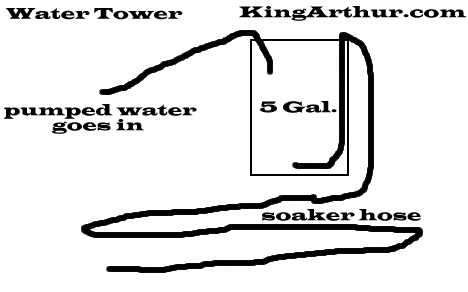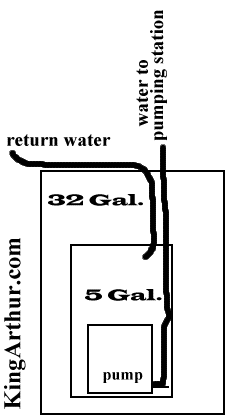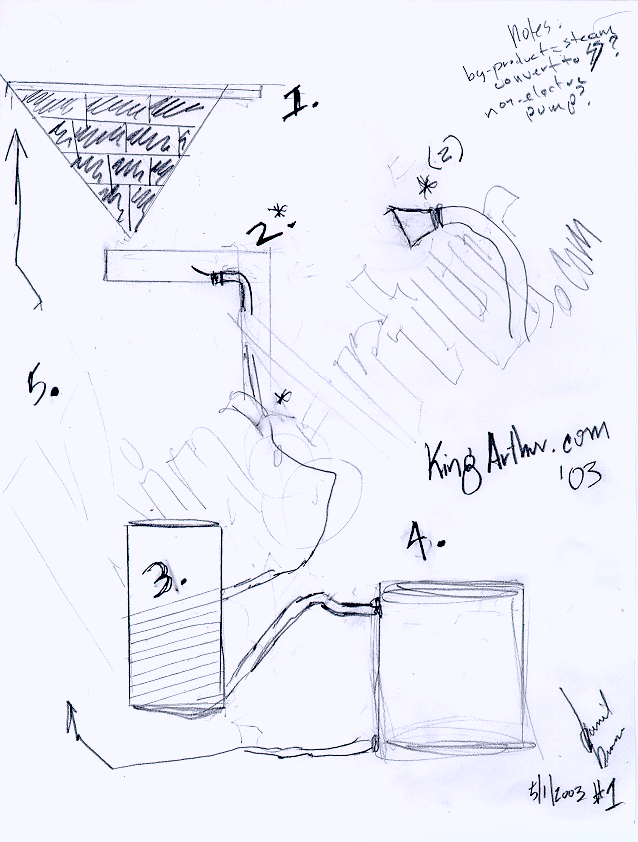
by Daniel Brouse and Sidd Mukherjee
Summer of 2003
By collecting rainwater and dripping it over the roof on hot days, the heat energy can be transferred away from the house through evaporation.
The Results: Turning Water Into Electricity
2. An existing gutter is used to collect water. A hose with a special fitting over the end (funnel and filter combination) is placed either inside the spout or outside its bottom. When it rains, the system fills with water. Once the system has filled, excess water runs off through the existing drainage.
3. On days when the system is in use, a solid black hose carries the water around the existing water heater. The hose is wrapped around the heater like an insulating blanket.
4. A holding tank(s) stores the water.
5. A pump starts the flow of the water.
Summary:
Evaporation cools the house. The hot water
is used for heating. A more sophisticated design
would capture the by-product, steam, and
convert it to stored energy.
See the "Notes" for additional information and updates.
Detail For Water Tower
A five gallon bucket sits on top of the roof.
A feeder hose brings in water to store. As
water is needed, it is released through a
bleeder or sprinkler hose.

Detail For Pumping Station
A large trash can is used as a safety net.
Inside the safety container
is a 5 gallon bucket filled with a
pump and water. When the 5 gallon bucket
fills with water, it pumps it to the water
tower. The water released from the water
tower is then recycled back through the
pumping station.

